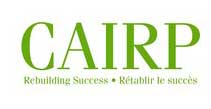As a Licensed Insolvency Trustee, people often wish to discuss debt with me. They are concerned about:
- their financial situation
- want to learn about what is a good debt verses a bad debt, and
- how it affects their financial future.
In Canada, using debt properly has helped many people afford to purchase things that otherwise would have been unobtainable. From buying a home to a vehicle, consumer debt has helped Canadian consumers get ahead in life.
Before Credit Cards
At one time debt was difficult to obtain, but now consumers can borrow money just by using a small plastic card.
Spending hundreds of dollars on credit is possible within minutes. Before credit cards, if you wanted to borrow money you had to make an appointment at the bank and apply through a bank manager or loans officer. The loans officer would listen to the reasons why you wanted the money, looked at your finances and then approved or denied your application for a loan.
When credit cards came out, the borrowing landscape changed by making credit more accessible and acceptable to the average person.
The banks and large consumer companies put out credit cards which were sometimes promoted at sporting events and community colleges as a convenient method of payment.
Minimum Payments
One of the more dangerous features of credit cards is the concept of being able to make just a small minimum monthly payment.
The minimum payment can be equivalent to around just 3% of the balance each month.
Since the interest rate on an average credit card is around 18%, if you cannot pay off the balance each month, making only the minimum payment can lead to a life-long cycle of credit card debt.
Today many people have multiple loans and credit cards with limits in the thousands of dollars.
Some experts might say that bad debt includes debt used to purchase something that goes down in value immediately after it is purchased, while good debt is used to purchase something that goes up in value.
Often, purchases made on credit cards like, furniture, clothing and entertainment would fall under their bad debt column, but sometimes it’s not that simplistic.
What is Bad Debt?
A bad debt is any debt for items that you don’t really need, e.g. new shoes or entertainment because these items go down in value immediately after it is purchased.
Plus, you’ve committed your future income to pay for them. Not only that, if you put the purchase on a credit card with high interest, you may end up paying far more than the item actually costs.
Some people have an entirely different and much simpler idea of good and bad debt. That being: bad debt only occurs when customers miss payments and fall behind.
Sometimes bad debt, like having a car loan is necessary and sometimes the line between a bad debt and good debt is blurry. For example having a car loan allows us to drive to work to earn a living, so maybe a car loan is a good debt?
We used to think the ideas of good and bad debt were easy to understand. It seems obvious when someone says “debt is good if it adds to wealth.”
Good Debt
Many people believe that a good debt is a loan for things that we believe are going to increase in value over time or provide for us for things that help us in life.
In the good debt column, financial advisors might approve of any debt that:
- adds measurable value,
- like a student loan,
- real estate loan,
- home mortgages and
- business loans.
Another idea of good debt is when it creates a tax-deductible option that aids in production of more wealth. An example of this would be borrowing money to purchase an RRSP.
Contrary to popular belief, good debt is not defined by making payments on a regular basis.
Good and Bad Debt in Bankruptcy
If you are considering a bankruptcy or proposal, these ideas of good debt and bad debt are not helpful. The words good and bad are not necessary.
More importantly, they are hurtful and destructive. Some debts fall into different classes like a house because a lender may hold a registered interest. But, it is far more helpful just to understand it all as debt.
Too often, people will consolidate all of their credit card debt by increasing their mortgage debt.
The debt and loan becomes consolidated mortgage debt, they now falsely believe it is all good debt. But the source problem may be that they were carrying too much mortgage debt to begin. And there’s a good chance this problem will repeat itself since other credit sources will continue to be used to support everyday expenses.
Too many people attempt a debt refinancing scheme around this notion of good and bad debt only to later discover they have only dug themselves deeper into the hole.
A Licensed Insolvency Trustee has the tools to approach the problem in a much larger way. It cannot just be about shifting and consolidating debt between creditors. It needs to start with looking at the entire financial situation.
First, you need to ensure that you have enough money on a regular basis to live comfortably. Once you have addressed the cost of your living month to month, then you can look at what you can afford to pay your creditors.




Comments are closed.